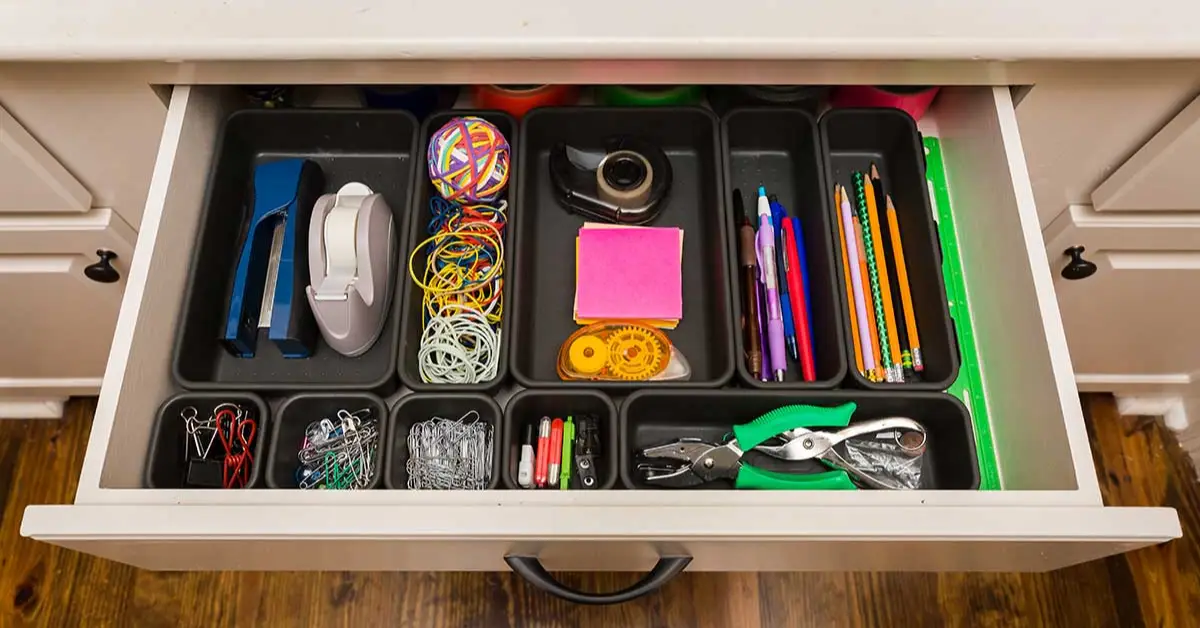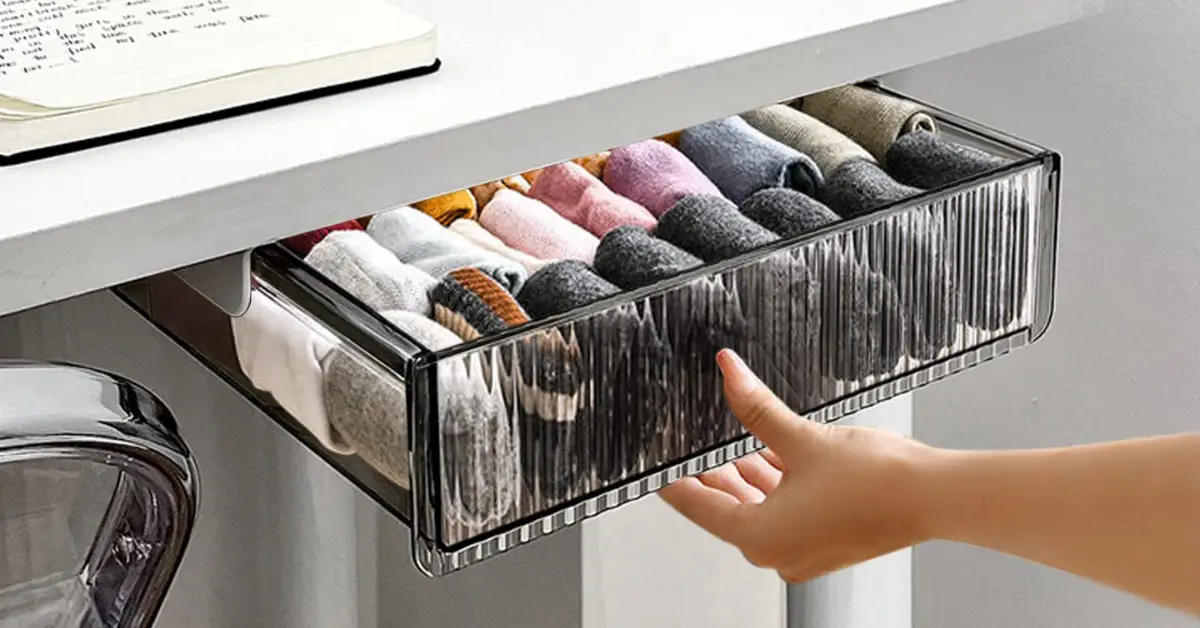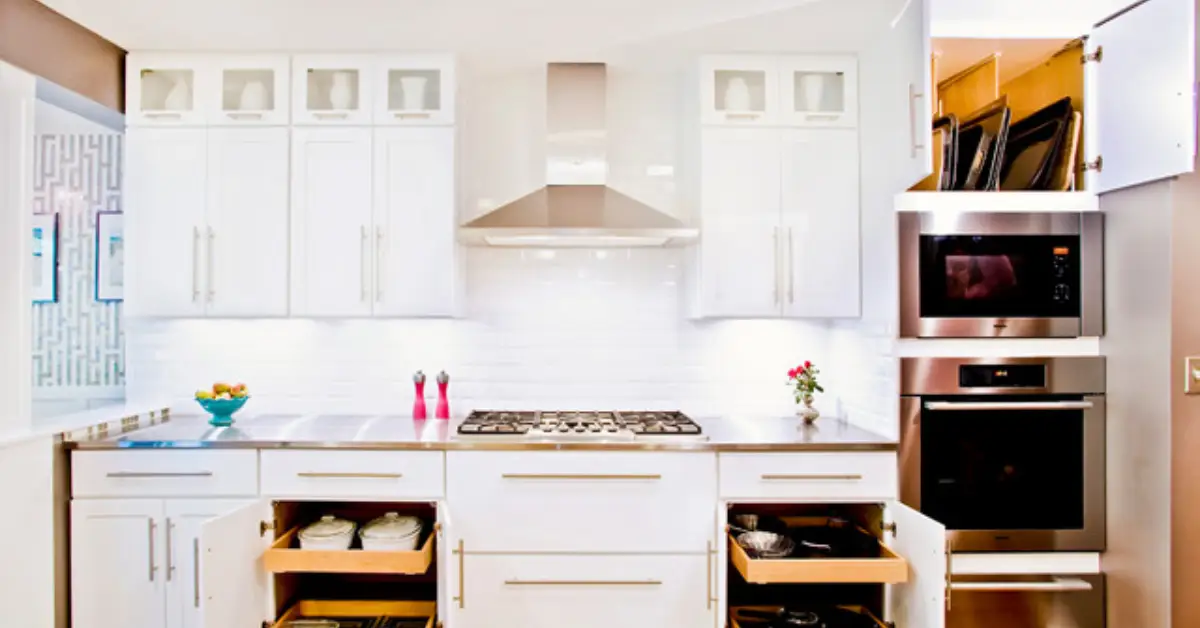Drawers Overflowing? 7 Clever Fixes to Make Space Where There’s None
I’ve lost count of how many times I’ve opened a drawer, stared at the mess, and thought, “How does this even happen?” Pens with no caps, half-used tape rolls, keys I don’t recognize — all tangled in one chaotic little universe. If you’re anything like me, you’ve probably done the same: shut it fast and promised yourself you’ll deal with it later. But “later” usually turns into next month.
Here’s the thing — drawers aren’t the problem. The problem is what we expect them to be. We treat them like tiny storage units for everything that doesn’t fit anywhere else. That’s how they turn into clutter magnets instead of the convenient, grab-and-go spaces they were meant to be. Over the years, I’ve learned that organizing drawers isn’t about having perfect containers or Pinterest-worthy setups. It’s about creating simple, repeatable habits that actually fit your real life.
So, if your drawers are full of “I’ll find a place for this later” items, you’re in the right spot. In this guide, I’ll share seven storage secrets that have helped me turn my most chaotic drawers into easy, stress-free spaces — no fancy organizers or hours of cleaning required.
Before we start, tell me this: if you could fix just one drawer today, which one would it be — your kitchen junk drawer, your dresser, or that office drawer that never fully closes?
Why Drawer Chaos Happens — and Why It’s Not Your Fault
If you’ve ever opened a drawer and felt that small wave of guilt — like you should’ve “kept it tidy” — stop right there. You’re not lazy, and you’re definitely not alone. Most of us were never taught how to design drawers for real life. We just fill them as we go, hoping things magically stay in place.
Here’s the truth: drawers are built for convenience, not strategy. When you’re in a hurry, you toss things in. When you’re cleaning up, it’s the easiest hiding spot. Over time, that quick fix becomes a habit — one that slowly turns order into chaos. According to Apartment Therapy, the average home has over 20 drawers, and nearly 70% of them are considered “junk spaces.” That means this isn’t just your problem — it’s an everyone problem.
The real issue? Decision fatigue. Every time you open a drawer and see a mess, your brain shuts down a little. Too many random items, no clear system, and no quick way to know what belongs — it’s exhausting. What starts as clutter ends up draining mental energy every single day.
So no, it’s not about being messy. It’s about missing a framework. Once you have one, those drawers stop being chaos zones and start becoming small systems that actually make your life easier.
1. The 15-Minute Empty-and-Audit Rule

Here’s where things start to shift. Instead of thinking “I need to organize this entire drawer,” think “I just need 15 minutes.” That’s it — one drawer, one small window of focus.
Here’s what I do every time I tackle a cluttered drawer:
- Empty it completely. Don’t leave a single thing inside. Seeing the blank space resets your brain.
- Sort fast, not perfectly. Create three piles:
- Keep — things you use or love.
- Toss — broken, expired, or random duplicates.
- Relocate — items that belong somewhere else.
- Clean the base. A quick wipe before putting anything back instantly makes it feel fresh. If you enjoy quick, practical decluttering systems like this, you’ll love our guide on how to declutter your kitchen in 7 simple steps — it follows the same 15-minute method but on a room-wide scale.
- Audit as you go. Ask: When was the last time I used this? If you can’t remember, it doesn’t deserve drawer space.
This quick audit isn’t about perfection — it’s about clarity. Once you see how little you actually need, it becomes easier to let go.
2. The 3-Zone System (Essentials, Occasionals, Extras)
Once the drawer’s cleared, it’s time to rebuild it with purpose. Think of it as setting up a mini “ecosystem” that matches your daily rhythm. I call it the 3-Zone System — simple, visual, and almost impossible to mess up.
1. Essentials Zone — Everyday Use
This is your front line. The things you grab daily without thinking:
- Pens and notepads
- Scissors or tape
- Phone charger or earbuds
Keep them right at the front, where your hand naturally reaches first. No digging required.
2. Occasionals Zone — Monthly Use
These are the tools you use every now and then — not daily, but still important.
- Batteries
- Measuring tape
- Backup cables or adapters
Place them in the middle or side compartments. You should see them but not bump into them constantly.
3. Extras Zone — Rare or Backup Items
This zone is for the “just in case” things — the ones you’d rather have than hunt for later.
- Candles or lighters
- Extra keys
- Spare pens or fuses
Keep them toward the back. They stay accessible, but out of your everyday flow.
The beauty of this system is its cognitive simplicity. When you reduce decision-making (“Where should this go?”), your brain relaxes — and that’s the real secret to long-term order.
Once you try this, you’ll notice something: your drawers don’t just look neater; they stay that way, because everything finally has a place that makes sense for how you live.
Which drawer are you going to test your first 3-Zone System in — kitchen, desk, or dresser?
3. Use Modular Inserts, Not Random Containers

Here’s where most people go wrong — we grab whatever small box or plastic tray we find lying around and call it “organized.” But that patchwork approach usually does more harm than good. Random containers rarely fit the drawer’s depth or width properly, leaving awkward gaps where clutter sneaks back in.
The smarter way? Go modular. Choose inserts that are designed to work together, like IKEA VARIERA trays, mDesign clear bins, or bamboo drawer dividers you can adjust to size. These options not only look cleaner but also create natural “boundaries” between categories — something the brain loves.
Here’s a quick guide before you buy:
- Measure before shopping. Note your drawer’s length, width, and depth in centimetres or inches.
- Mix shapes intentionally. Combine small square trays for tiny items and long rectangular inserts for cords or utensils.
- Leave a flexible zone. Keep one open section for miscellaneous items that rotate seasonally (like holiday batteries or sewing kits).
For inspiration, browse some Pinterest storage setup ideas — you’ll notice the best ones look clean not because they’re empty, but because they use consistent materials and spacing. Once you go modular, even a junk drawer starts to look deliberate.
4. Label Like a Minimalist
Now that your drawer has structure, it’s time to make it foolproof. The best organizers don’t just look good — they communicate. A simple label can stop a mess before it starts, especially when multiple people share the same space.
Skip the loud stickers and go for a minimalist look: small, clear font or icon-based tags that blend in quietly. I like using simple label makers or printable icons — a battery symbol, a tiny pair of scissors, or a plug outline. It keeps things clear even for kids or guests.
Here’s what I’ve learned after years of trial and error:
- Label by function, not item. Instead of “Cables,” try “Charging Gear.”
- Use icons for quick scanning. You don’t need to read what you can recognize visually.
- Stick labels inside the lip of the drawer for a clean, uncluttered appearance.
5. Stop Mixing Room Purposes

This one might surprise you: most clutter doesn’t come from how much you own, but from mixing categories that don’t belong together. You know that kitchen drawer with spare batteries, scissors, and takeout menus? It’s not a “junk drawer” — it’s a confused one.
Each room in your home serves a purpose, and your drawers should too. When you start mixing categories — like utensils with electronics or makeup with medicine — your brain stops recognizing logical patterns. Every search becomes a mini scavenger hunt, and over time, that mental friction adds up.
Here’s how to fix it:
- Assign drawer zones by function. Kitchen drawers handle food and tools; office drawers handle stationery; bathroom drawers handle grooming.
- Relocate misfits immediately. Don’t keep items “just because there’s space.” And if you’re preparing for a move or just reorganizing your setup, check out our post on how to declutter your electronics before moving — it’ll save you time, cables, and sanity when packing.
- Think flow, not storage. What do you reach for in that space daily? That’s what deserves a home there.
When you stop mixing categories, you’ll notice a calm that goes beyond tidy drawers. Every item suddenly makes sense where it lives — and that’s the kind of order that lasts.
Which drawer in your home feels the most “mixed up” right now?
6. The 5-Minute Weekly “Reset” Trick
Here’s the truth no one tells you — organizing once isn’t enough. Without a quick maintenance routine, even the best system slides back into chaos. The trick isn’t to spend hours re-sorting; it’s to spend five focused minutes once a week doing a “drawer reset.”
I treat it like brushing my teeth — simple, automatic, and part of the rhythm of my week. Usually, it’s Friday night while music’s playing or right before a weekend cleanup. I pull open one or two drawers, scan for misplaced items, and do a quick straighten-up. That’s it. No drama, no deep cleaning.
Here’s a simple reset method that actually sticks:
- Pick one drawer per week. Rotate through them in a loop so none get neglected.
- Use a timer. Five minutes per drawer, max.
- Do it with music. It keeps the task light and motivating.
- End with satisfaction. Close the drawer, take a breath, and enjoy that small sense of order.
You’ll be surprised how little effort it takes to maintain calm once everything has a home. It’s the consistency, not the intensity, that keeps drawers from ever turning into junk zones again.
7. Build a Drawer Detox Routine for the Whole House

Once you’ve mastered one drawer, it’s time to expand. This step is all about scaling the calm — turning your drawer organization into a simple, repeatable house-wide routine.
Start Small, Expand Later – One Drawer a Day
Don’t overwhelm yourself by trying to do the whole house in one weekend. Pick one drawer per day — kitchen today, bathroom tomorrow, office next week. By the end of the month, every space will feel lighter without burning you out. Once you’ve mastered one drawer a day, you can take it further with our 30 Bags in 30 Days decluttering guide — a simple challenge that helps you clear every room without burnout.
Reward System – Habit Loop That Sticks
Here’s where most people fail — they treat organization like a chore, not a win. Your brain loves rewards, so use them. After finishing a drawer:
- Treat yourself to something small — a coffee, a walk, or just a “done for the day” moment.
- Track progress visibly — make a checklist, tick boxes, or keep a journal.
- Pair it with a cue — like your morning coffee or evening unwind, so it becomes automatic.
Psychologists call this a habit loop — cue, routine, reward. Once your brain links that mini dopamine hit to organizing, it becomes effortless.
Bonus Tip – The 1-in, 1-out Rule for Permanent Order
If you want your drawers to stay organized long after the initial cleanup, this is the golden rule: for every new item you bring in, one old item has to go out.
It sounds simple, but it’s the most powerful anti-clutter habit you can build. Buy new scissors? Donate or toss the old pair. Get a new set of pens? Remove the dry ones. This keeps your drawer volume stable and prevents slow creep — that sneaky return of clutter we all know too well.
Why it works: it builds mindfulness. Every decision becomes intentional. You’re not just filling space; you’re curating what belongs in it.
According to Psychology Today, reducing clutter reduces stress and decision fatigue, freeing up mental energy for things that actually matter. That’s why this one small mindset shift can change how your whole home feels.
The “1-in, 1-out” rule might not sound dramatic, but it’s the difference between staying organized for a week — or for life.
So, the next time you add something new, ask yourself: What’s leaving to make room?
Key Takeaway – An Organized Drawer = A Calmer Mind
Here’s what I’ve learned after years of trying every storage trick in the book — a tidy drawer isn’t really about neatness. It’s about mental clarity. When your everyday spaces are calm, your mind follows. You start your day faster, find things without effort, and feel in control of your home instead of constantly catching up with it.
Every time you open a drawer that’s clean, categorized, and easy to navigate, there’s a tiny moment of peace — a small reminder that you’ve created order in at least one corner of your world. That calm adds up. It’s not about perfection; it’s about being intentional with what you keep and how you live.
If this guide helped you rethink your “junk drawer,” take five minutes today to put it into action. Clear one drawer, set up your zones, and notice how much lighter the space — and your mood — feels.
Your turn: What’s the most chaotic drawer in your home right now, and what’s the first thing you’ll do to fix it? Share your answer in the comments below — your small win might inspire someone else to start their own drawer detox.
And if you’d like to keep this momentum going, visit Build Like New for more simple, real-life home improvement and organization tips designed to make your spaces — and your routines — feel brand new again.
Disclaimer: The organization methods and product suggestions in this article are based on personal experience and general best practices. Always measure your own space and choose solutions that suit your household’s specific needs. Build Like New is not affiliated with any mentioned brands.


